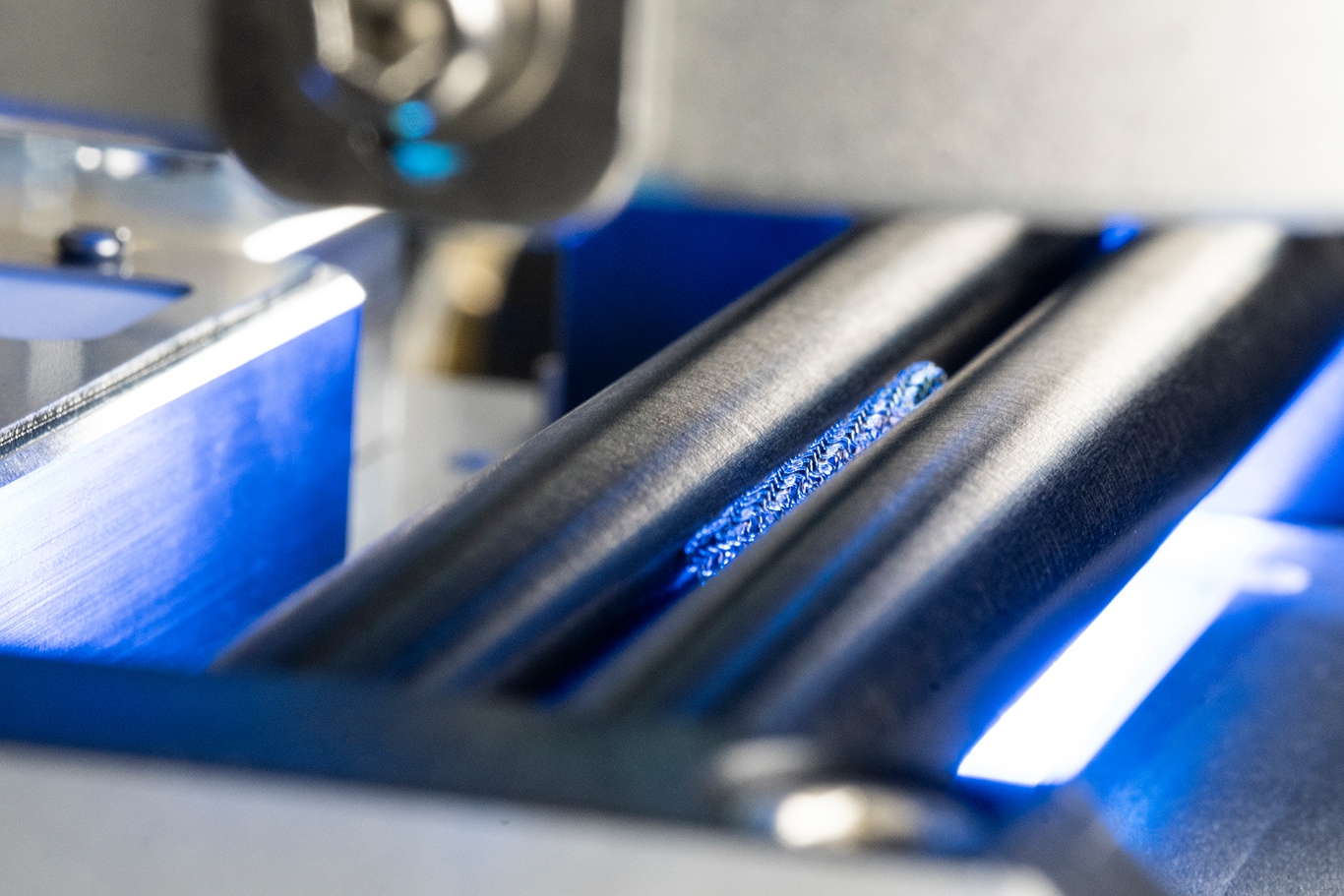Challenge of quality assurance: Stents are subject to high safety requirements
As invasive medical devices, stents are subject to high safety requirements. Strict specifications therefore apply to both production and quality assurance. In stent production, a very precise and reliable 100 percent inspection in the manufacturing line is absolutely essential. Today, this is most commonly carried out as a visual inspection using a macroscope.
The very complex structure of the stents as well as the surfaces, which are difficult to inspect, place very high demands on the visual inspectors. The inspection must focus on both the shape of the stent and the surface condition: Surface defects must be detected and classified, and the presence and thickness of coatings must be checked. Defects in the transparent coatings, which have a thickness of just a few micrometers, should also be identified.
Reliable inspection of shape, surfaces and coatings
The stent camera by Fraunhofer IPM performs all these inspection tasks automatically. It captures the stents and inspects them fully automatically from all sides. Both the outside and the inner side are fully imaged by a single camera system. The shape of the stent is precisely recognized by means of transmitted light illumination. Incident light illumination provides information about surface defects. As a special feature, the stent camera offers an optional fluorescence imaging: The entire stent can be examined in terms of its fluorescence in spatial resolution – again from the outside and inside. This makes it possible to characterize the properties of organic coatings that may contain pharmaceuticals, for example. Thickness and defects in the coating are detected with spatial resolution.
Fully automatic testing directly in the production line
During the inspection, a fully automatic evaluation of the images can be carried out so that faults are automatically detected and documented. This makes it possible to perform a fully automated test specifically tailored to certain issues, with "O.K." or "not O.K." information already available at the time the stent is completed.
The system is designed for operation in a fully automated handling environment, but can also be used with manual feeding of the stents.
